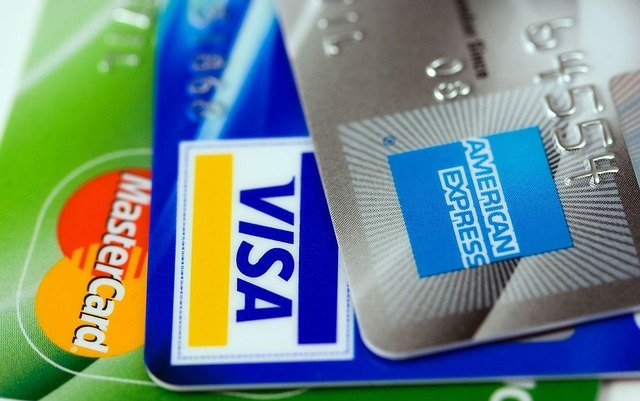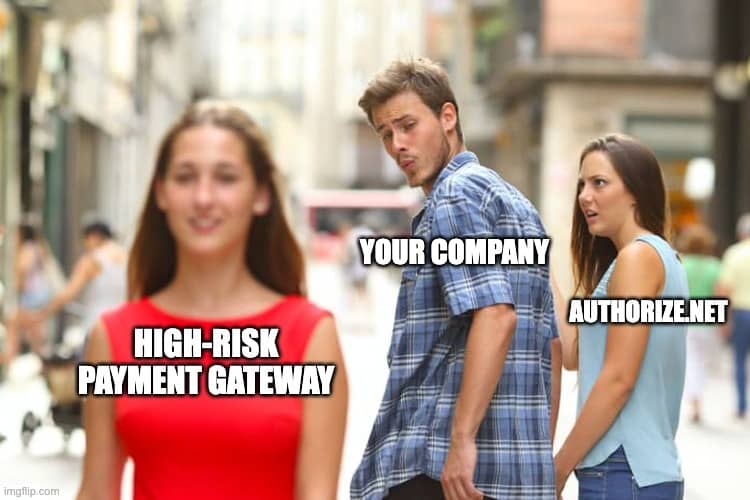What Is a Rolling Reserve, and Why Do I Need One?

As a business owner, you already know that banks and financial institutions implement numerous protocols to minimize risks on a merchant account. If you already have a merchant account, or if you’ve applied for one and been denied, it helps to know about some of these protocols and how they can affect your monthly fees. One way that banks protect themselves is through a strategy called a “rolling reserve,” which is imposed by your acquiring bank (the bank associated with your merchant account). While it’s unavoidable for some accounts, a rolling reserve can impact your cash flow over a given period.
Rolling reserves are typically imposed upon businesses considered high-risk due to various factors. These so-called high-risk businesses may be financially successful, but regardless of revenues, they’re typically denied payment processing services because of their industry.
No matter what type of business you have, if you’re in a high-risk industry and trying to get payment processing services, Zenti can help. As one of the nation’s leading high-risk merchant account providers, Zenti can help you get approved for the services you need, including credit card, e-check, and mobile wallet payments, at low monthly fees you can afford. Plus, Zenti offers tools to help you streamline your monthly invoicing, so you can spend less time on bookkeeping and more time on your customers.
What Is a Rolling Reserve?
In a rolling reserve, an acquiring bank withholds a certain percentage of a business owner’s gross credit card sales, then places the funds in a non-interest-bearing account. The acquiring bank holds these reserve funds in the account for a predetermined period. This rolling reserve strategy is usually imposed upon high-risk merchant accounts.
How Much Is Held in a Rolling Reserve?
Typically, the acquiring bank will impose a rolling reserve of anywhere from 5% to 15% for 18 months. The amount is calculated by the merchant’s acquiring bank and determined by various concerns, particularly risk factors.
These are just typical figures; however, an acquiring bank can impose an increased rolling reserve percentage for businesses in higher-risk industries. It all depends upon the predetermined risk of your industry, as well as other payment issues that may be associated with your transaction and payment processing history.
While there isn’t a cap on how much the acquiring bank will hold, the good news is that the figure is always based on the predetermined percentage.
How Long Does a Rolling Reserve Keep Going?
A rolling reserve continues as long as you do business with your payment processor. Your payment services provider will continue withholding this predetermined percentage of your transactions during this time. And while these reserve funds will be released to you after a certain amount of time, it’s important to understand that the process will continue to roll forward, with new funds being added to your rolling reserve account even as the previous funds are being released back into your merchant account.
That’s where the term “rolling reserve” comes from — the withholding/releasing process does continue to roll forward. However, the bank is only allowed to hold the funds for the required hold period, as designated at the beginning of the agreement. And if you decide to change your payment processor, your acquiring bank will agree to return these funds to you within 6–12 months.
What Is a Minimum Reserve?
While a rolling reserve and a minimum reserve may work together as protective protocols for banks and card issuers, they’re both distinctly different.
As the name implies, a “minimum reserve” refers to the amount of money you must keep in your balance. This minimum reserve can be calculated two ways, as an upfront amount that you deposit all at once or according to sales percentages over time, until the correct minimum reserve is reached.
Payment service providers rely upon minimum reserves to establish credibility in a merchant account. Toward this end, they require merchant clients to maintain a minimum reserve in their accounts at all times to mitigate financial risks.
Capped and Up-front Reserves
In addition to rolling reserves, some acquirers may utilize other protective strategies, including capped reserve accounts and up-front reserves. Here’s how they work:
Capped Reserves
These also withhold a monthly sale percentage, but no more funds will be withheld once a fixed cap is reached. This fixed amount, which may end up being around half the merchant’s processing volume for the month, stays in reserve throughout the agreement.
For example, if a merchant processes 20,000 USD a month, their capped reserve would be 10,000. The acquirer would withhold 10% (or 2,000 USD) each month until that 10,000 USD cap is reached, after which no more funds would be withheld.
Up-Front Reserves
These work similarly to capped reserves, except the amount withheld is placed in escrow at the start of the agreement. The primary difference with this method is that the acquirer doesn’t withhold any percentage of monthly sales.
Payment processors such as Stripe, Paypal, and Amazon have created their rolling reserve arrangements. Most operate similarly to traditional rolling reserves but with added features or requirements that are exclusive to their companies.
Why Is a Rolling Reserve Necessary?
Banks impose rolling reserves because of one thing: risk. Banks and payment processors incur a certain amount of risk with every credit card transaction due to various factors we’ll discuss below. The rolling reserve serves as a financial hedge — protection against losses that banks can utilize if a merchant account becomes financially problematic. This is especially necessary because high-risk merchant accounts can sometimes be prone to financial problems.
What Are High-Risk Industries?
Banks, financial industries, and credit card companies consider certain industries high-risk because they’re prone to specific transaction problems or customer behaviors that make them a financial risk. Here’s a sample of some popular industries designated as high-risk:
- Pharmaceuticals
- Nutraceuticals
- Vape and CBD retailers
- Adult entertainment websites
- Adult products
- Online dating sites
- Travel agencies
- Airline tickets
- Pre-order concert tickets
- Document preparation services
- Property management
- Fantasy sports
- Collectibles and antiques
- Multi-level marketing companies
- Gun retailers
- Payday lending services
- Online gambling and gaming sites
While some of these industries are especially lucrative, they pose a financial risk for banks and credit card processors. Because of this risk, it can be impossible for some merchants to get credit card processing and payment gateway services.
If you’re in a high-risk industry, dealing with a rolling reserve may be unavoidable; but as an expert merchant services provider, Zenti can help you get access to a full roster of merchant services. With Zenti, you’ll be able to take VISA, Mastercard, American Express, and Discover, as well as e-checks and mobile app payments, without paying the typical high fees associated with high-risk accounts.
Why Is an Industry Deemed High-Risk?
Industries can be designated high-risk due to various factors, including many that the merchant has little or no control over. These factors may include:
High sales processing volumes: A business with unusually high sales volumes may act as a red flag for banks and credit card processors.
High rate of card-not-present transactions: These occur when the card isn’t physically present. Instead, the card data is entered online or given over the phone. Card-not-present transactions are a necessary part of the e-commerce business, but they pose a higher risk for merchants and banks.
Social stigmas: Certain industries, such as vaping, CBD, or adult entertainment industries, are typically associated with social stigmas, making banks reluctant to work with them.
Poor credit history: As with a bank loan, it can be impossible to get financial services if you or your business have a bad credit score.
In addition, many industries are deemed high-risk because of one primary factor: high chargeback rates. And chargebacks are the bane of banks, credit card companies, and merchants.
How Can Chargebacks Impact Your Business?
No one likes to deal with chargebacks, but excessive chargebacks can be financially damaging and ruinous for some businesses. Chargebacks can cost companies up to 40 billion USD a year — and every 100 USD in chargebacks can end up costing merchants as much as 240 USD in fees and revenue loss.
Chargebacks occur when customers contact their bank or credit card company and dispute a charge so they can get a refund. Common reasons for chargebacks include:
- Fraudulent charges
- Delivery errors
- Damaged goods
- Missing items
- Customer dissatisfaction with product or service
E-commerce businesses are especially vulnerable to high chargeback ratios because customers don’t have the opportunity to see and experience products in person. Likewise, certain industries are prone to chargebacks because of customer behaviors.
For example, as popular as subscription services are, subscription providers still suffer from huge cancellations each month. These can happen because a promo deal ended and the customer didn’t want to pay full price, or because they changed their mind, didn’t like the service, or decided it was too expensive. These chargeback losses can be massive, which is a primary reason subscription services are included in the list of high-risk industries.
If your business is considered high-risk due to too many chargebacks, you can help prevent them using an expert merchant service provider. Zenti works with Payment Card Industry (PCI) compliant payment processors that use the latest next-generation protocols and tools to protect your account from fraudulent activity. Plus, Zenti provides solutions so you can track and monitor your transactions from the point of sale through final processing. And by staying on top of each transaction, you can prevent chargebacks from recurring.
Why Banks Impose Rolling Reserves
When working with high-risk merchant accounts, banks and credit card issuers have to protect themselves against unexpected liabilities. These liabilities can occur because of high chargeback ratios or a high level of credit card and identity fraud. By imposing rolling reserves, banks can recoup some of the enormous financial losses that may occur. And with fewer liabilities, banks can continue safely providing credit card companies underwriting.
How Does Underwriting Affect Credit Cards?
Banks and financial institutions act as financial backers for credit card companies. By doing so, they also agree to incur losses if and when they occur. But to do this, they must protect themselves with security protocols like rolling reserves.
The entire payment processing chain comprises various components, including the acquiring bank, payment processor, credit card company, and issuing bank. Ultimately, the proverbial buck stops with the banks and financial institutions that finance and issue credit cards.
Without rolling reserves and other security protocols, banks and financial institutions wouldn’t be able to underwrite credit card companies — without this financial backing, credit cards couldn’t exist. Underwriting is a crucial component of the global payment process, which is why banks, card companies, and processors must protect themselves from industries with more significant financial risks.
Can You Avoid Rolling Reserves?
For high-risk merchants, rolling reserves are a standard part of operations. But there’s one way you can mitigate the financial impact: by using a top-notch merchant services provider that specializes in helping high-risk merchants save money.
As one of the nation’s leading high-risk merchant specialists, Zenti can help you get a full roster of payment processing services, so you’ll be able to take all major credit and debit cards, e-checks, and mobile app payments. Plus, Zenti can supply you with the tools you need to protect your account, prevent chargebacks, and streamline monthly invoices.
To find out more, contact Zenti and learn how we can help you grow your business, boost revenues, and retain customer loyalty at monthly rates you can afford.
Read Next

Find out whether Authorize.Net works for high risk merchants, what restrictions you might face and how to get approved.

Get expert advice on selling CBD products on Shopify, including compliance tips and setting up secure payment options.

Find out why Square may deactivate merchant accounts and steps to resolve issues and maintain uninterrupted payment services.
Need a High-Risk Merchant Account?
Disruption-free payment processing at the best price for your situation, guaranteed.
Get Free Guidance Now!